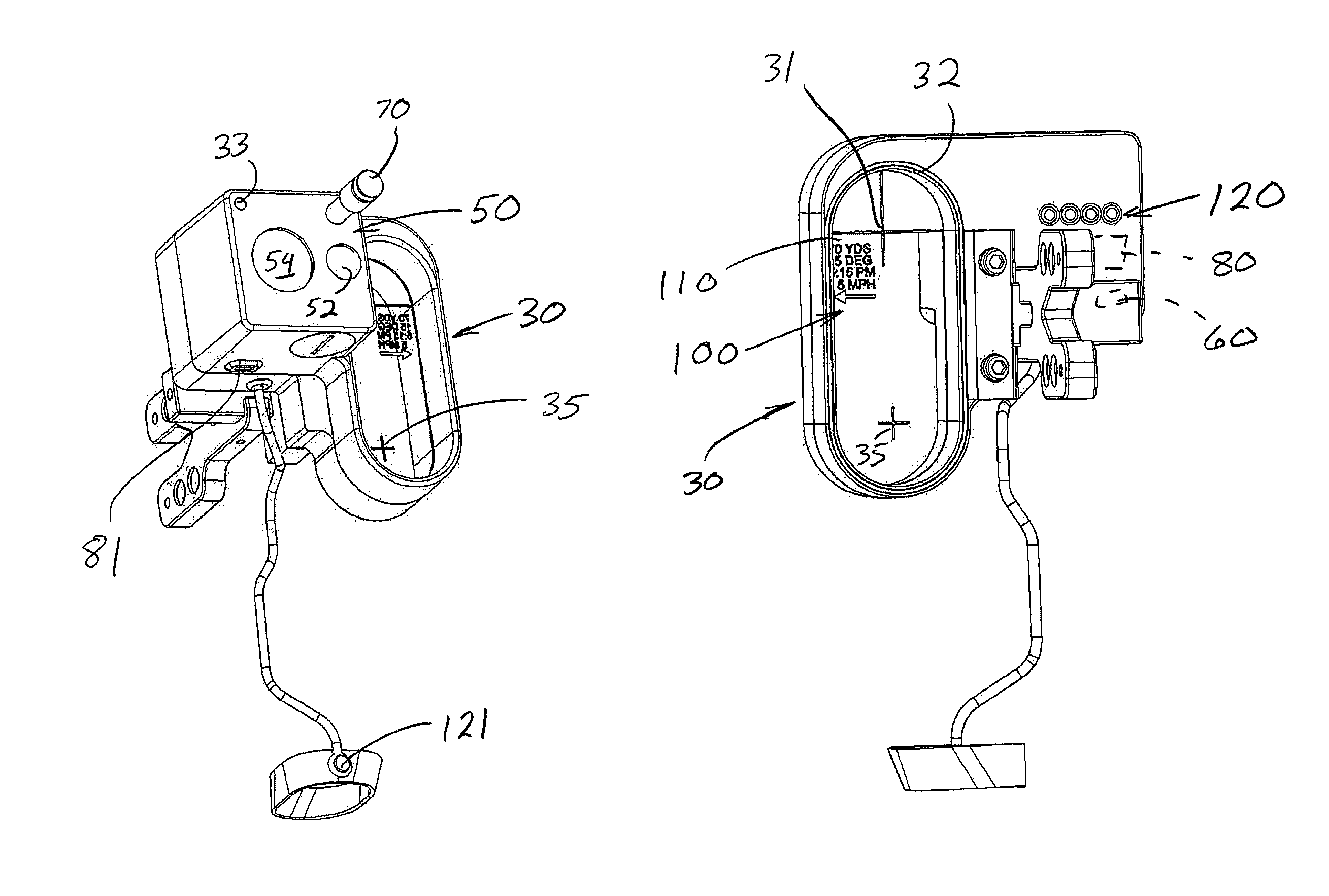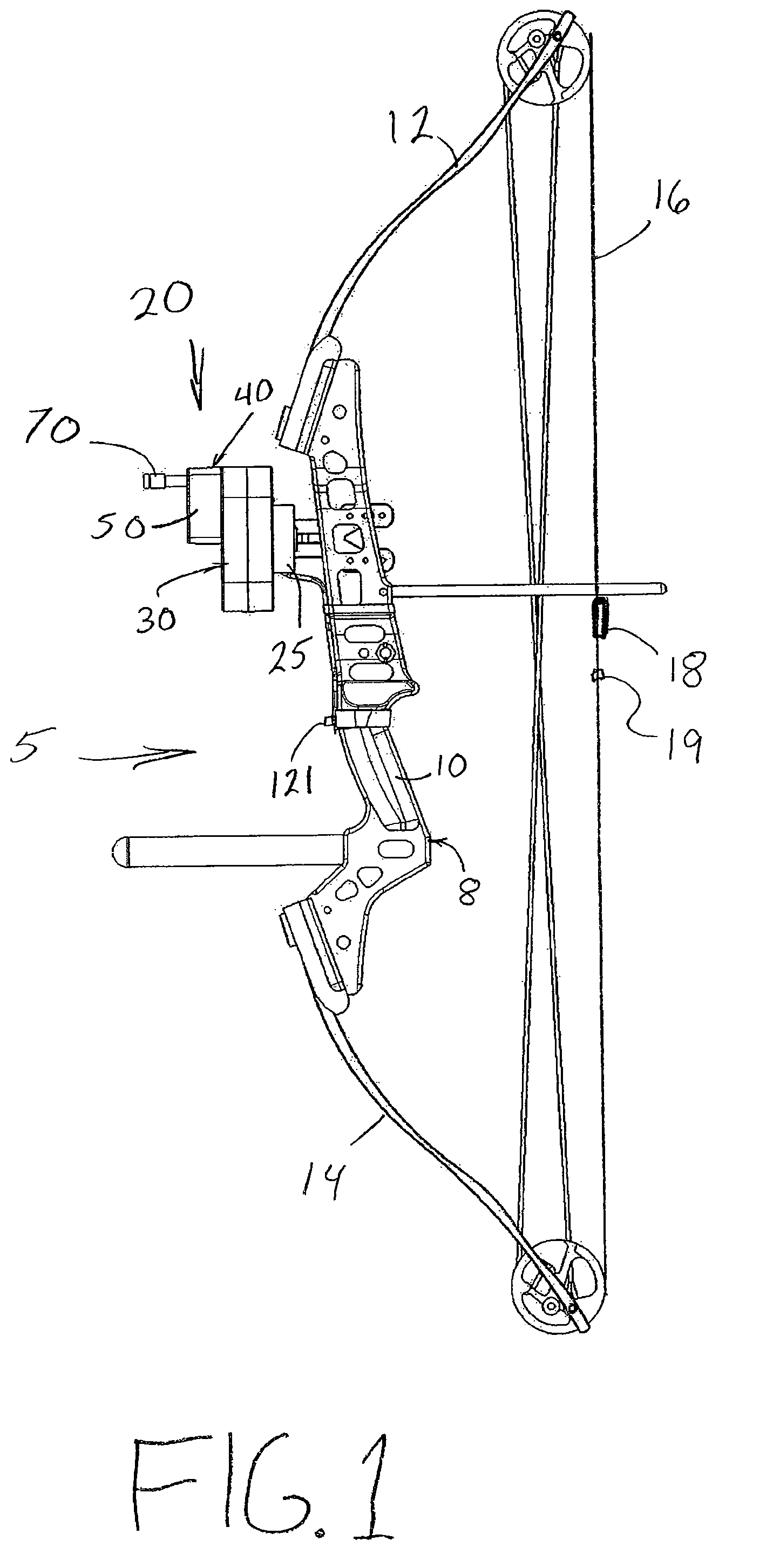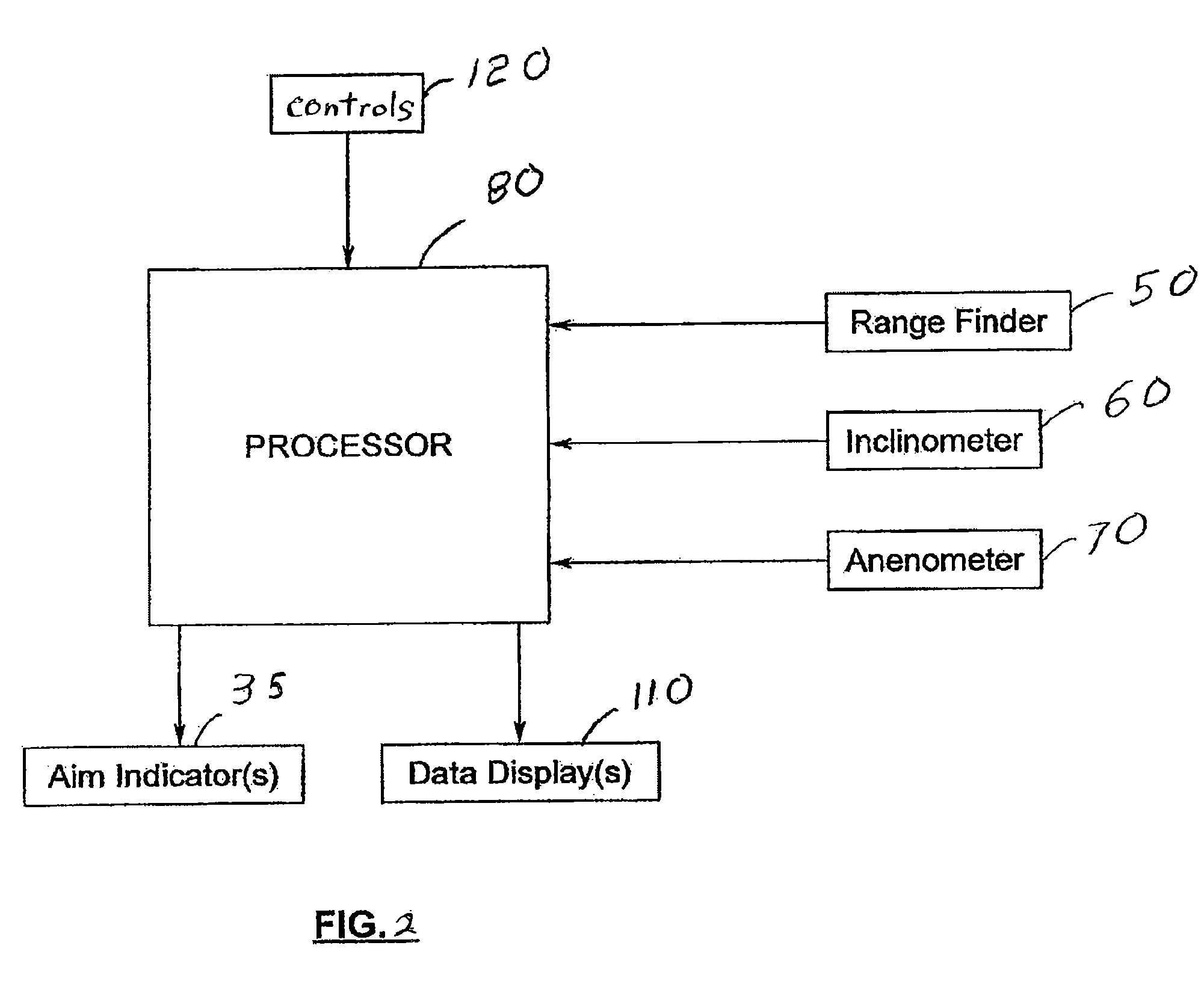Auto-correcting bow sight
a bow sight and auto-correction technology, applied in the field of bow sighting devices, can solve the problems of wasting shot opportunities, laser-based range finders taking time to calculate the desired distance, and accurate range estimation for archers
- Summary
- Abstract
- Description
- Claims
- Application Information
AI Technical Summary
Benefits of technology
Problems solved by technology
Method used
Image
Examples
Embodiment Construction
[0040]As discussed in the “Summary” section above, the invention relates to a bow sight that compensates for situation-specific shooting and environmental factors that can influence arrow flight, for example, by performing a situation-specific aim evaluation and correction procedure. The preferred bow sight has selectively illuminating or displayable aim indicators that are illuminated or otherwise visually or audibly displayed at positions which compensate for such situation-specific shooting and environmental factors in a manner that allows an archer to take “dead aim” with, or aim directly at, an intended target at all times.
[0041]Various embodiments of a bow sight will now be described that achieve these and many other goals, it being understood that other configurations may be provided that fall within the scope of the present invention. Such exemplary embodiments of the bow hunting accessory device of the present invention are illustrated in the accompanying drawings in which ...
PUM
 Login to View More
Login to View More Abstract
Description
Claims
Application Information
 Login to View More
Login to View More - R&D
- Intellectual Property
- Life Sciences
- Materials
- Tech Scout
- Unparalleled Data Quality
- Higher Quality Content
- 60% Fewer Hallucinations
Browse by: Latest US Patents, China's latest patents, Technical Efficacy Thesaurus, Application Domain, Technology Topic, Popular Technical Reports.
© 2025 PatSnap. All rights reserved.Legal|Privacy policy|Modern Slavery Act Transparency Statement|Sitemap|About US| Contact US: help@patsnap.com



